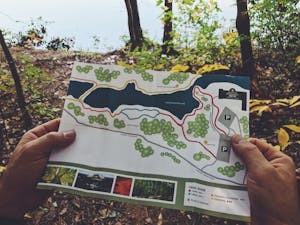- 6 minute read
- Digital Marketing
- Industry Insights
- Websites
8 Ideas Tour Operators Can Use to Evoke Luxury in Their Brand
All Skill Levels
Join hundreds of other operators and REGISTER NOW for Spark 2024 New Orleans October 13-15th!

Running a business requires adapting to consumer demands. For tour operators, the challenge is to present an activity that turns into an experience customers will never forget.
While the right path may seem straightforward, there is an art form to designing a journey that will best resonate with your target customer’s desires.
You need to look at your tour from the perspective of the customer. Are they getting value for their money from your unique experience? Will it leave a pleasing memory in their minds? For tours that cover a lot of ground and visit points of interest, a large component of this is the tour route itself.
Whether you run a walking tour or take customers around the city via Segway, your tour route depends on the places you plan to visit and things you plan to do during the experience. Here’s how to create a route customers are sure to enjoy.
Walking and sightseeing tours are the bread and butter of so many businesses. No matter how your unique tour operates, the basics are the same. How you adapt those basics is what makes all the difference. Consider things like:
 Transportation
Transportation Will you need to provide transportation (fleet services, public options, small cars, bikes, etc.)? How much will that cost you as a tour operator? You must also consider how to fit transportation into the schedule, for instance, if it is needed to go between multiple stops on your tour route.
 Customer Satisfaction
Customer SatisfactionEvery business, young or old, big or small, has to consider customer experience. The better your ticket holders enjoy your walking tour, the more positive reviews you’ll get on Tripadvisor and other review sites.
That means planning out the route so that every twist and turn provides value. Try to blend hidden gems with expected attractions. You don’t want your customers to feel rushed, but motivated to move on to the next stop because of their excitement.
 Safety
SafetyFinally, safety is a number one priority for a walking tour. You have to consider where you are walking and what you might encounter in the local environment.
Rehearse your walking tour well in advance to ensure you avoid unnecessary pit stops or interruptions. You are cultivating a finely laid craftwork that is similar to being on stage. While improvisation is encouraged, unwanted or dangerous situations are not. Always be prepared for emergencies.
Your tour must be engaging. Stop and think about what has worked in the past. Did you have a handwritten map, or was there a new mobile app that improved the experience? What tours have you taken yourself that stuck out to you?
While you’re at it, listen to feedback from your customers and peers. A well-placed review can go a long way in improving your tour for future guests.

You must do your research! You want to begin with the end in mind by focusing on the destination you are covering and working back to your meeting point.
Write down the significant touch points of your walking tour (statues, historical buildings, points of interest, etc.) and sprinkle in those unique local haunts that will stick out in your customers’ minds.
If you can, adopt a theme for your tour based on this research. Why do you think there are tour guides in Boston Commons dressed like they’re from the Revolutionary War or tour guides in Florida wearing pirate hats?
Part of the allure of local walking tours is getting immersed in the area’s flora, fauna, and culture. Give your customers a treat and stop by a coffee shop you know has the best cookies or a gift shop with locally designed postcards and souvenirs.
The partnerships you build will add a ton of flavor to your overall tour experience. Plus, you get fun characters that people cannot find anywhere else.
 Pro Tip: Be sure to get a win-win deal from these partnerships. Post flyers or discounts to your tour in the businesses you frequent so you can boost the exposure of your business.
Pro Tip: Be sure to get a win-win deal from these partnerships. Post flyers or discounts to your tour in the businesses you frequent so you can boost the exposure of your business.
Let’s keep this simple. If you are offering a walking tour – is your tour actually walkable? Can you physically get around the area you want to visit? Do you need a license to operate?
Every path will have a unique rhythm. You need to plan where to stop for breaks, long sections of narration, or special events during your tour. Get to know them like the back of your hand before being in charge of a group that is likely to create unexpected situations.
Technology is expected by today’s customers. Tools like Google Maps can give you a simplified, multi-stop route for getting to every one of your destinations. And audio systems make it so that every guest on your tour can hear what you have to say.
You can also consider apps for self-guided tours or for guests to use to follow along or read more information on their smartphones.
 Pro Tip: Consider using Google Maps or Canva to create an immersive tour map that can also be used in your marketing. Canva has easy-to-use layouts that can help you put together a visually pleasing (not to mention cost-effective) tour route overview.
Pro Tip: Consider using Google Maps or Canva to create an immersive tour map that can also be used in your marketing. Canva has easy-to-use layouts that can help you put together a visually pleasing (not to mention cost-effective) tour route overview.
No matter what your tour involves, you want to keep your route updated with the latest stops, partnerships, local flair, and fun your customers will love. Listen to customer feedback, watch those online reviews, and have fun. With a little creativity, you can build a route your customers will always remember!